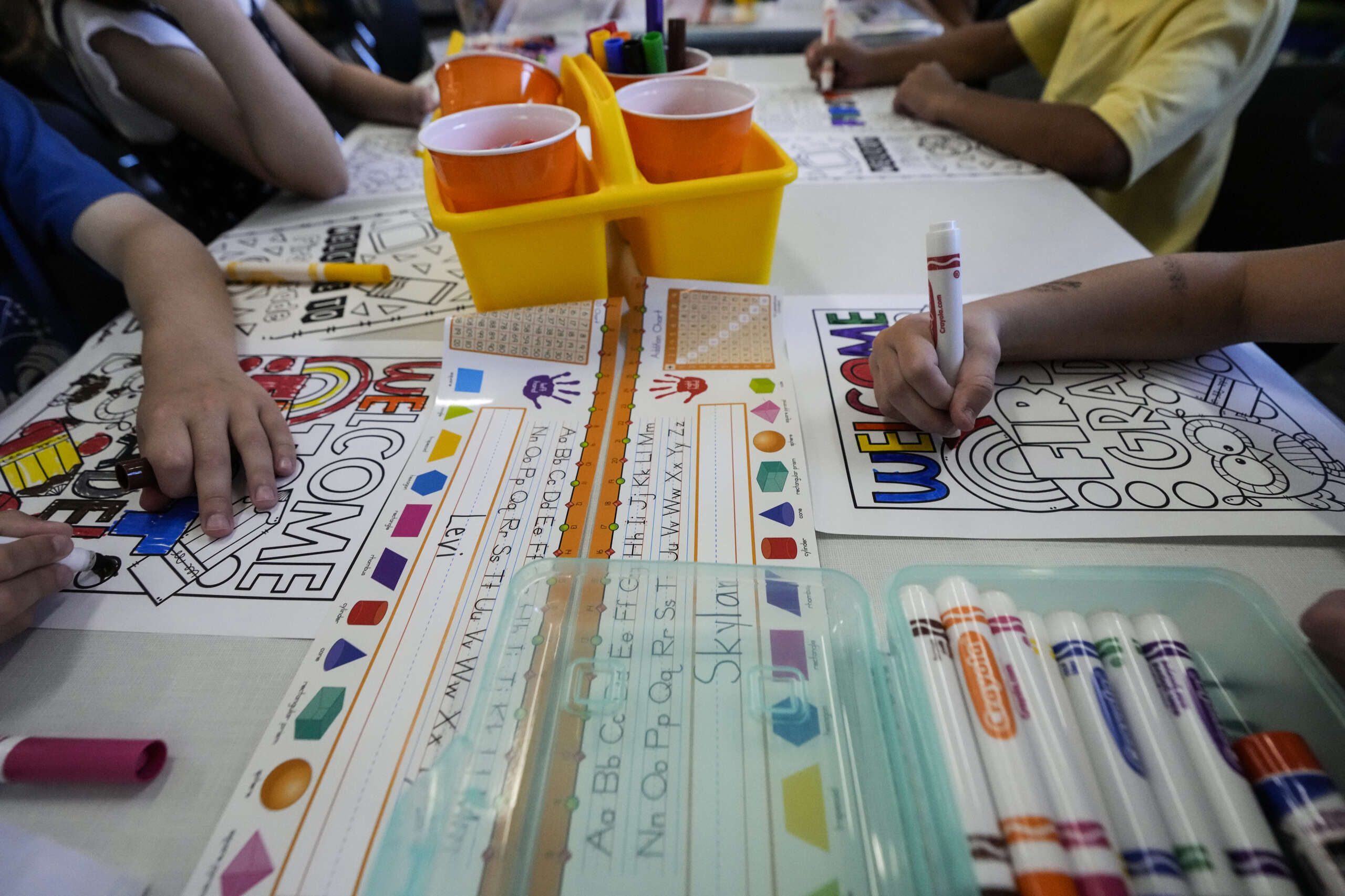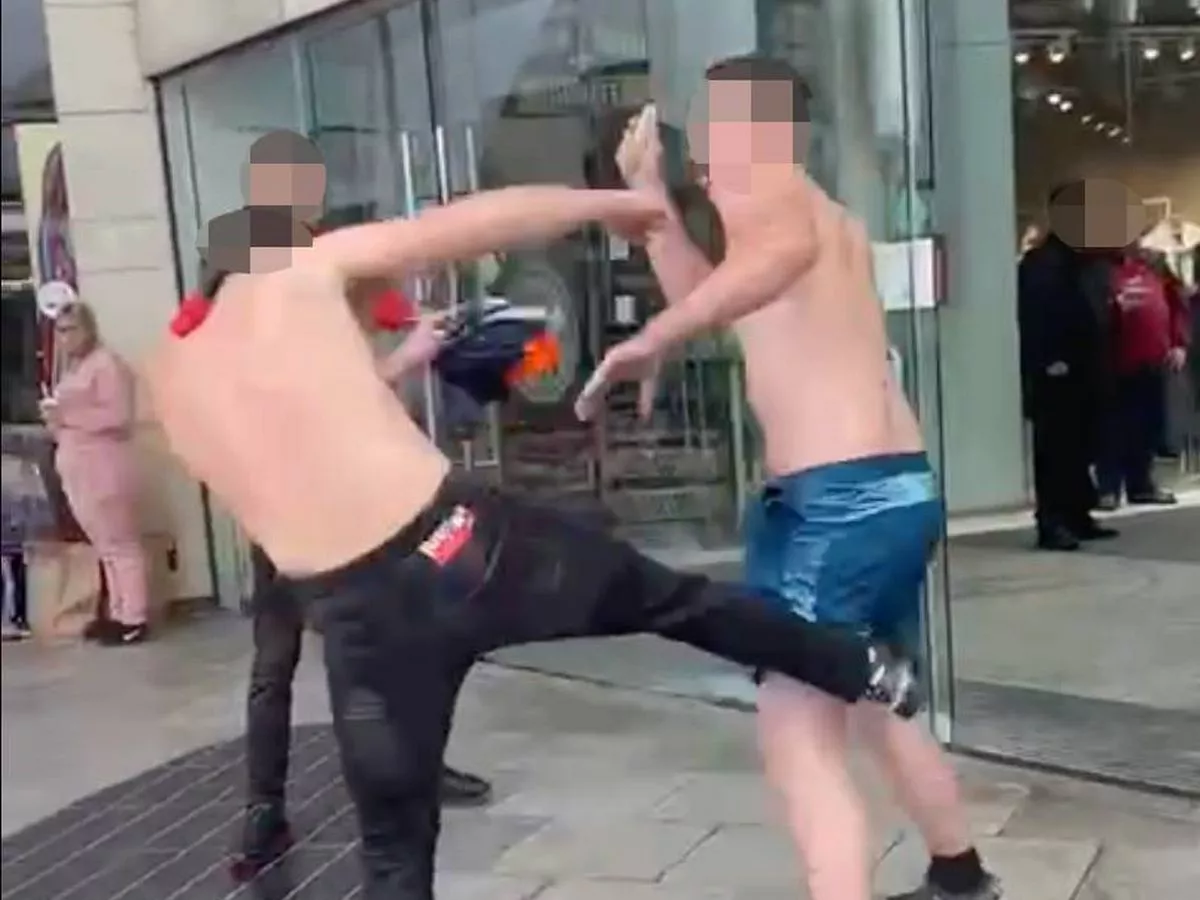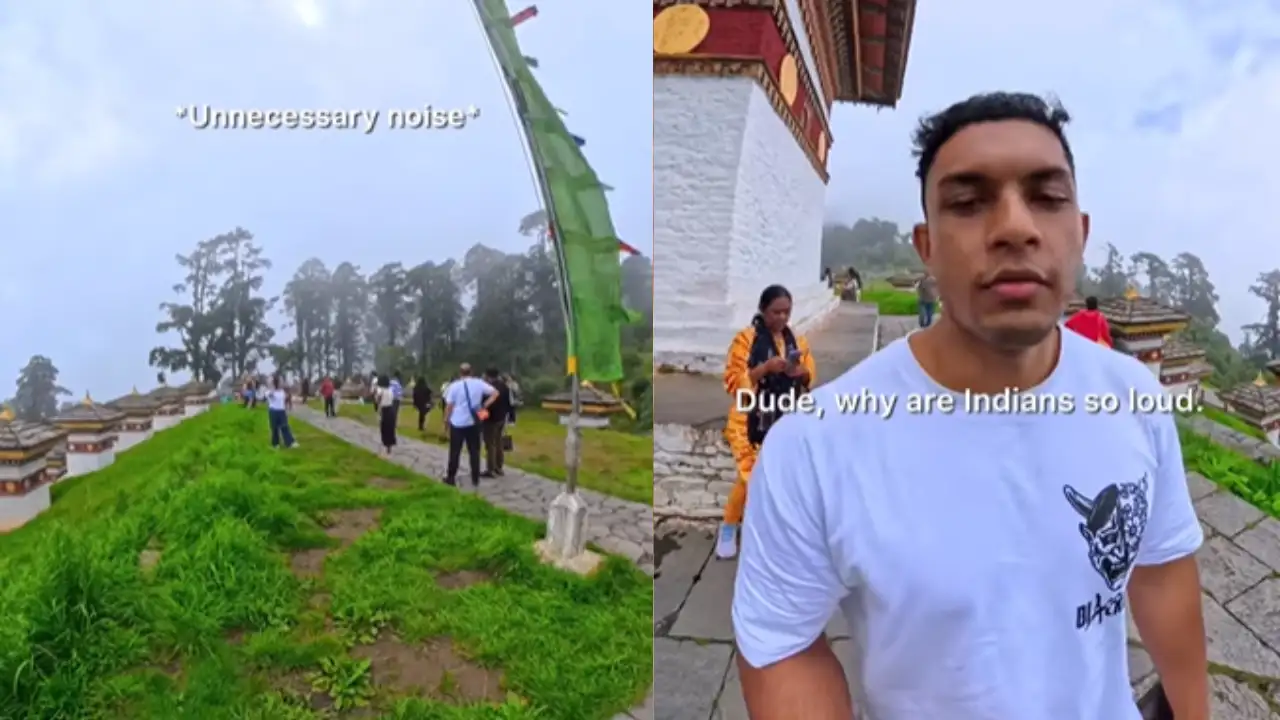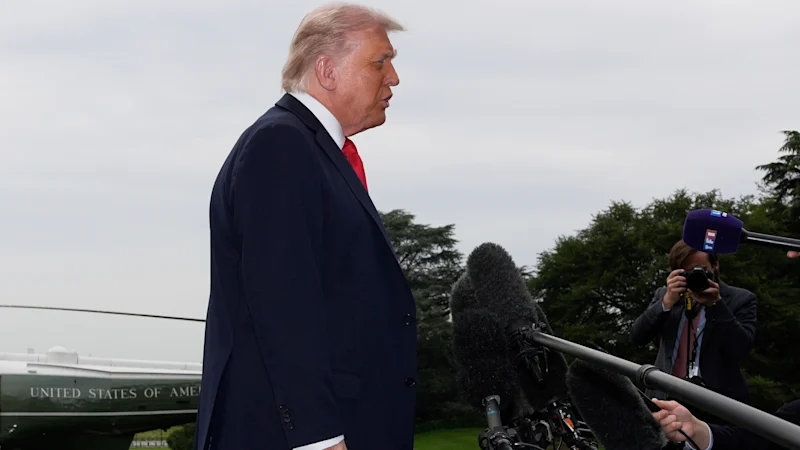By George Yancy
Copyright truthout

Education in the U.S. is in danger of becoming a site where white nationalism exclusively dictates what is taught and learned.
In the past, Donald Trump has decried discussions in U.S. schools about systemic racism as a “twisted web of lies” and even “a form of child abuse.” Now, in the wake of Charlie Kirk’s assassination, the far right is weaponizing the killing to push for alarming new infringements on free speech — including against professors and K-12 teachers.
The white ideological form of indoctrination promoted by Trump and the far right reinforces the lie that the U.S. is a country of “racial innocence.” In a 2024 interview with Truthout, Cornel West argued that “what distinguishes the American empire is its obsession with innocence, and its obsession with dreams. The innocence hides the violence, and the dreams generate the sentimentalism.”
Education that is obsessed with “innocence” denies reality. To deny reality is, in this case, to have one’s judgment clouded by sentimentalism that is tied to American nostalgia, which is indicative of the MAGA ethos. It is important, therefore, that the lie of white innocence be laid bare through a daring form of critical education that reveals how white complicity functions to conceal itself. If critical thought is necessary for a democracy and vital for challenging MAGA’s book banning, anti-BIPOC and anti-LGBTQIA ideology, along with its epistemic violence, it is necessary to unveil the threats to education in this contemporary moment.
In this exclusive interview, Barbara Applebaum provides deep insights into the far right’s current odious distortion of U.S. education and suggests critical ways of articulating and demonstrating opposition. Applebaum is professor in Cultural Foundations of Education at Syracuse University. Her training is in philosophy of education, but her work and teaching are interdisciplinary in nature. She is the author of Being White/Being Good: White Complicity, Responsibility and Social Justice Education and, more recently, White Educators Negotiating Complicity: Roadblocks Paved with Good Intentions. The interview that follows has been lightly edited for clarity and length.
George Yancy: Speak to the importance of the critical in critical education at this moment. And how do we encourage criticality among educators given the political stakes?
Barbara Applebaum: As I am reflecting on your profoundly relevant questions, I am simultaneously preparing my fall courses and trying to negotiate the challenges of teaching with commitments to social justice at a political juncture where, on the one hand, such commitments are accused of being “divisive” and “harmful to students” and, on the other hand, anti-BIPOC and anti-LGBTQIA rhetoric is gaining confidence. Educators who encourage students to question hierarchies of hegemonic power and teach about the effects of the norms of whiteness on all students and on our society are charged not only with “indoctrinating an ideology of wokeness” but also with promoting hate toward white people. Ominously, book bans, anti-“critical race theory” (CRT) laws, and “Don’t Say Gay” laws are being justified by professed “good intentions” that are selectively concerned with students in ways that the difference between forms of genuine harm and the discomfort often necessary for learning become indistinguishable.
Education as the battleground for cultural wars is hardly new. James Baldwin reminds teachers who want to teach with commitments to social justice that “you will meet the most fantastic, the most brutal, and the most determined resistance.” Yet there seems to be something unprecedented in the way education today is under attack. Book bans, as well as anti-CRT and “Don’t Say Gay” laws, work against empowering students with the critical tools required to recognize and challenge power structures that affect their lives and the lives of those around them. These laws not only attempt to silence marginalized perspectives and concerns but also obstruct the ability to communicate and have rich dialogue in the classroom. Education that does not encourage an openness to perspectives that are silenced by systemically dominant narratives is not politically neutral. And now the criticality required to understand this is being muzzled through fears of severe penalties, threats of loss of employment, and other forms of harsh punishment, as you have yourself experienced in the past. Yet opposition to the type of criticality that critical education encourages is harmful to all students because if one refuses to name something, one does not have to do anything about it since it becomes easy to pretend the unnamed reality does not exist.
Criticality is vital for democracy. Critical education is a remedy for the type of divisiveness that harms, not its cause. But it is important to underscore what I mean by criticality because the concept of “critical” can be co-opted, as when some students declare they are being “critical” of critical education. The language of criticality can serve to support the very techniques of governance that critical education attempts to bring out for analysis.
What makes today’s attack on critical education so unprecedented and challenging is that on the one hand, hermeneutical resources necessary to explain and communicate marginalized experience are being censored. On the other hand, those very same hermeneutical resources are being misused, distorted, and detached from their original meaning to re-veil exactly what those resources aim to unveil. This is why the recent scholarship around epistemic injustice by José Medina, Kristie Dotson, and Gaile Pohlhaus Jr., among others, is so vital for the criticality we need to encourage in our students. Those who have been pushed to the margins of social reality develop hermeneutical resources to understand their experiences and to engage others in conversations about their experiences. What we are experiencing today is that those in power censor progressive ideas but then deploy these concepts in misappropriated ways to shield dominant group “innocence” from challenge. Such defensiveness makes constructive communication across different positionalities impossible in the classroom. And this entire process masquerades under the label of being “critical” of critical theory. Ironically, students can only recognize this, even consider this, and dialogue about this if they have the critical tools that critical education fosters.
Critical whiteness studies, a field of critical education that I teach, offers students the tools to make visible the hegemonic normativity of whiteness that operates both through individuals and institutions without question but also aims to contest the discursive and rhetorical ways systems of hegemony are maintained. When white students protect their sense of innocence by resisting the discomfort that results from questioning white-centered reality that they are comfortable with, whiteness is re-centered, fortified, and upheld; anti-BIPOC [sentiment] along with other forms of social injustice are emboldened. Nothing in what I teach tells students to hate white people. I offer them critical tools that can encourage them to consider: What don’t we know? What don’t we want to know? What do we need not to know? At the end of the course, I will ask my students to be their own judge whether I have indoctrinated them to hate white people, or whether I have instead provided them with some of the necessary concepts that facilitate constructive conversations across different positionalities.
I teach undergraduate and graduate philosophy courses on whiteness. Part of the problem is that many of my white students come to class unaware of how their whiteness is complicit with systemic racism. In your book, Being White, Being Good, you argue, “White complicity pedagogy encourages white students to learn to be constantly vigilant as there is no innocence to hide behind.” Given the attack on diversity, equity, and inclusion (DEI), explain how educators, through the lens of white complicity pedagogy, can effectively circumvent the lie of white innocence. As you know, DEI has been important in terms of refusing to lie about the reality of anti-BIPOC racism.
White innocence, in particular, and dominant group innocence, in general, is one of the most tenacious obstacles that gets in the way of critical reflection on whiteness or other forms of dominant norms, not to mention that it impedes cross-racial dialogue. Even the most ardently self-proclaimed white paragons of white anti-racism must be vigilant about the ways white innocence can become a smoke screen that chokes off deeply critical self-reflection about how one is complicit in the perpetuation of unjust systems of racism. White confessions of complicity in public self-disclosures can indeed function as a relief from the discomfort of learning about one’s complicity. Even when whiteness is disavowed, one must be vigilant that whiteness is not reiterated. That is why white complicity pedagogy begins with helping white students recognize the ways they are complicit and challenges white innocence.
For some people, these are very provocative claims. Yet the astonishment of this provocation itself belies presumptions of innocence. When I present a paper demonstrating how white innocence inhibits the ability to consider one’s complicity, I am often sharply accused of discounting any view expressed that goes counter to that claim. The ostensible advocacy for “viewpoint diversity” seems disingenuous at a time when diversity, equity, and inclusion programs across the nation are being shut down and teaching about race and gender are severely restricted.
I find your writings on white innocence as a form of suture helpful to my students’ understanding of the harms of white innocence. Being sutured by presumptions of innocence protects invulnerability and closes one off from alterity. You call for white people to un-suture so we/they can be open and not afraid to be vulnerably moved by BIPOC epistemologies and to encourage white people to tarry with critiques of whiteness instead of running away from them.
White complicity pedagogy aims to help white students towards un-suturing by demonstrating to students how presumptions of white innocence influence the ways white people understand whether systemic racial injustice exists, who is harmed and victimized by it, and what we can do about it. Complicity is the starting point (although not sufficient) for racial ethics.
In the classroom, I have observed the subtle and not so subtle attempts to defend white innocence impeding the ability of white students to engage with what BIPOC students are saying and it contributes to the racial battle fatigue that BIPOC students so often experience in higher education. Working with white students to critically examine when their good intentions and their benevolence harm others using videos, stories, research and, most significantly, reading about the consequences of whiteness on BIPOC students is a challenge. It is not that white students should not have good intentions but rather that good intentions are not enough and that there is a need to develop a critical vigilance for when good intentions are harmful to others. I specifically make my own whiteness vulnerable and reference examples from my own teaching practice. I mention a story about two white nurses in my course who constantly pronounced their benevolence. They took this course to learn about their “diverse” clients to help them better, they insisted, not to learn about their whiteness. To which one of my BIPOC students replied, “Who wants your help? BIPOC people are looking for justice. Help is not the same thing as justice.” The nurses’ beliefs in their good intentions blocked their ability to consider that white generosity often comes not only with mistaken understandings but also with expectations of gratitude. I may not have broken through the nurses’ white innocence, but I observed that this story has had an effect on other white students when I recount it.
I find it helpful to complement readings in critical whiteness studies with readings that discuss the connection between discourse and truth. In addition, as already mentioned, there is so much to learn from delving into the scholarship and research on epistemic injustice.
Put briefly, I name the many ways that innocence is bolstered by white denials (in other words, revealing how complicity works in quotidian moments) such as claims of ignoring race, white silence and other white distancing strategies, blaming the victim and ignoring historical and institutional contexts, and more. I emphasize that these are patterns of practices that are reiterated and, consequently, harm BIPOC students through accumulation. (Your analysis of the elevator effect is so immensely helpful in demonstrating this.) Finally, I emphasize that being complicit does not do away with activism but rather makes us accountable to work together with others through a vision of responsibility that is vulnerable, exhibits a willingness to accept uncertainty that emerges from humility, and to not be afraid of vigilant critique.
Henry A. Giroux links the global spread of fascism with the fact that civic culture is crumbling under “the weight of manufactured ignorance.” You’ve written a great deal about ignorance, especially the concept of willful ignorance. This concept is not just a complex epistemological one but involves a process that could entail all sorts of profound dangers. I’m thinking here, for example, of those who are willfully ignoring the environment, health care, toxic xenophobia, the rise of fascism. Talk about the pervasiveness of the logics of willful ignorance in the U.S. and how this country is crumbling partly because of it — specifically at this moment.
Manufactured ignorance reminds me of Zeus Leonardo’s argument that white people know about the daily and structural features of systemic racism but have willfully distorted interpretations of such features that are taken for truth. Moreover, manufactured ignorance is systemic and intentional in the sense that it is an ignorance born not only from not knowing but also not wanting to know, not needing to know, and needing not to know. The erudite philosopher Charles Mills famously describes white ignorance as an agreement to misinterpret the social world that is relentlessly cultivated by norms, habits, discourse, social imaginaries, and institutions that perpetuate systems of oppression and privilege. Such ignorance is not just a lack of knowledge but supported by dominant systems, and it is active because it allows dominant ideas to be projected onto marginalized experience in ways that distort, erase, and silence the meaning of such experiences. It is not just being unaware but actively choosing not to know. This is especially prevalent in the direction our society is going today.
Willful, active ignorance is the glue that holds presumptions of innocence and denials of complicity together because ignorance serves to protect white people’s self-image as “good” and to ignore uncomfortable truths about ourselves/themselves that would challenge that self-image. Two outstanding scholars helped me to more clearly articulate the “willful” in this type of ignorance and thus its harms and responsibilities.
Gaile Pohlhaus Jr. charts out relationship between situatedness and interdependence as two factors in the creation and dissemination of knowledge in society. I won’t detail that here. But a helpful concept emerges from this analysis. Willful hermeneutical ignorance points to the ways in which communities of marginally situated knowers develop conceptual resources to explain their experiences. However, dominantly situated knowers not only actively refuse to acknowledge and use these resources but also often impose dominant conceptual resources to explain the experiences that marginalized knowers express. This constrains what dominantly situated knowers are likely to know and what dominantly situated knowers are willing to know. Willful hermeneutical ignorance makes forming cooperative interdependent relationships with differently situated knowers difficult. Using inapt concepts to interpret experience and refusing to recognize its faultiness impairs communication across positionalities.
Motivated ignorance is the term Karyn Freedman uses to describe the kind of incentivized ignorance that arises in circumstances of unequal power relations and that protects individuals from reflecting on the benefits they accrue in virtue of being a member of a dominant social group at the expense of harms to others.
Willful ignorance is not new, but it is especially dangerous today given who has the power to censor how people can speak up against social injustice. Facts and truths can be willfully ignored and there is a political effort that makes such ignore-ance harder and harder to discredit. But the consequences are far-reaching and dire. Not only does willful ignorance deteriorate the ability to recognize and name injustice (which impedes efforts to address and change injustice through collective action), but also moral character is eroded in ways that risk leaving us with the corpse of democracy.
This brings us back to the importance of the critical in critical pedagogy. To resist and fight against ignorance as such is one thing, but willful ignorance fights back against knowledge. In short, MAGA as a movement embodies a site of willful ignorance, where Trumpian true believers subsume their freedom under a banner of white “purity.” How do we fight against willful ignorance, which empowers Trump?
I am struggling with that question today; many of us are. In order to keep this short, I will mention these four points that seem important to me. First, be willing to address how whiteness infects intersectionality. Specifically, I am trying to apply the ideas I mentioned above to help my white Jewish students understand how to be genuinely engaged and not defensive when we have discussions about Palestine. Second, white complicity pedagogy can recenter whiteness and be complicit when educators decenter the needs and interests of BIPOC students as they are dealing with whiteness. Be vigilant about the risks of recentering whiteness even when we have good intentions. Third, find spaces where you are critically challenged, echoed, and supported. Read Truthout. I found chapters 4 and 5 of Jesse Hagopian’s Teach Truth: The Struggle for Antiracist Education inspiring. Finally, don’t give up. You are not alone; there is an emotionally healing and powerful resistance alive and well. Curricula whose primary objective is to teach the critical skills necessary to understand, analyze, and challenge oppressive systems are being shut down through fear. Collectively, we need to break through the wall of fear gripping education and that is shaping what kind of country this is going to be. Keep fighting.



